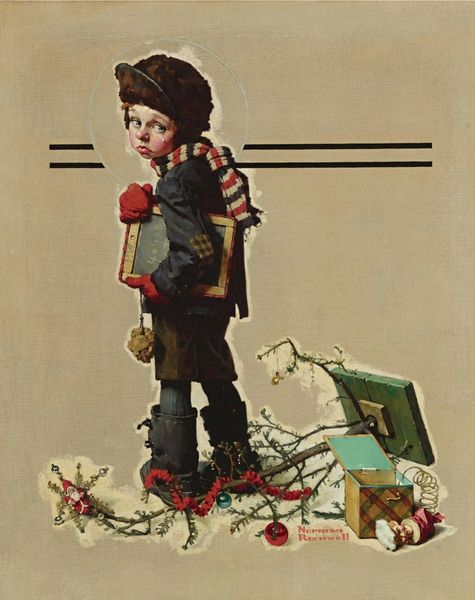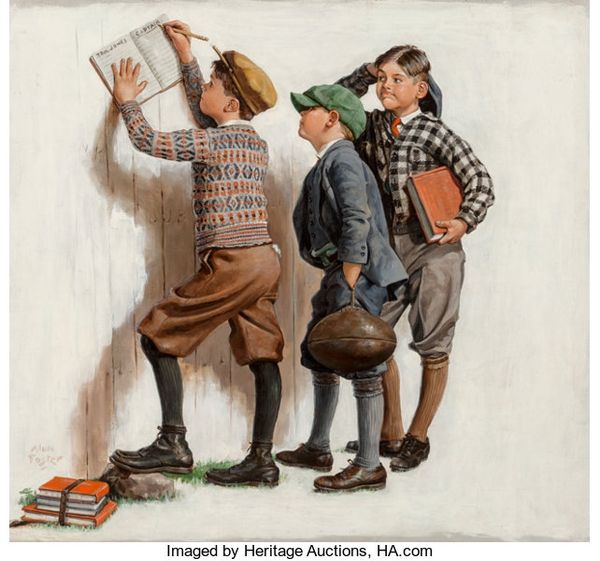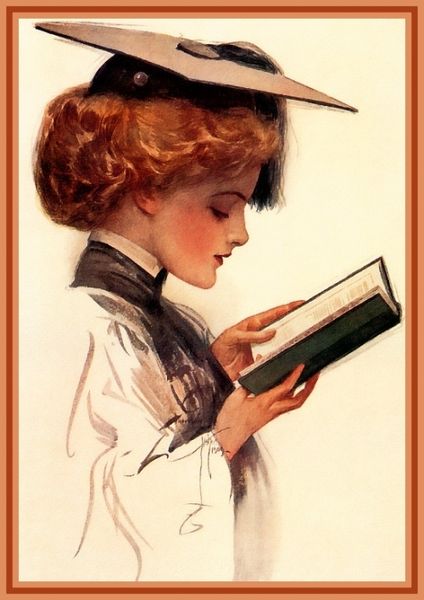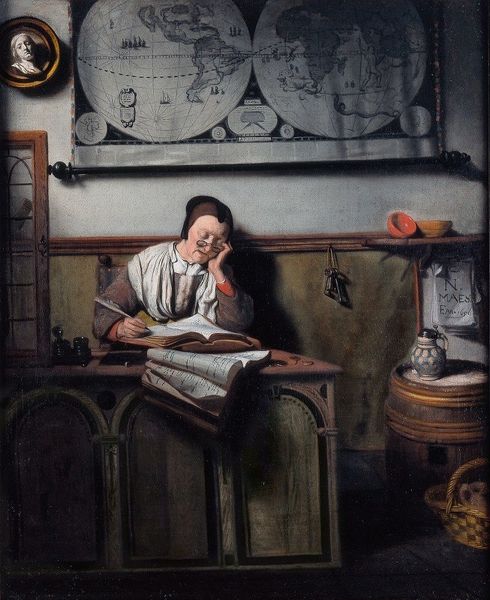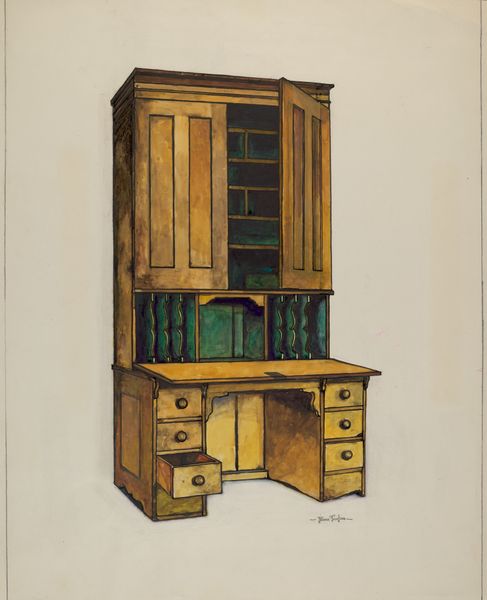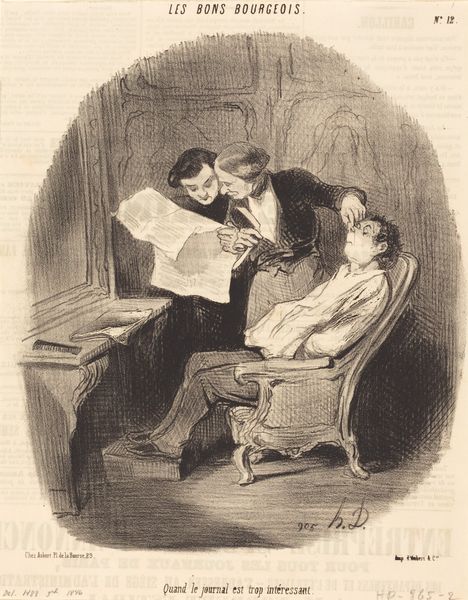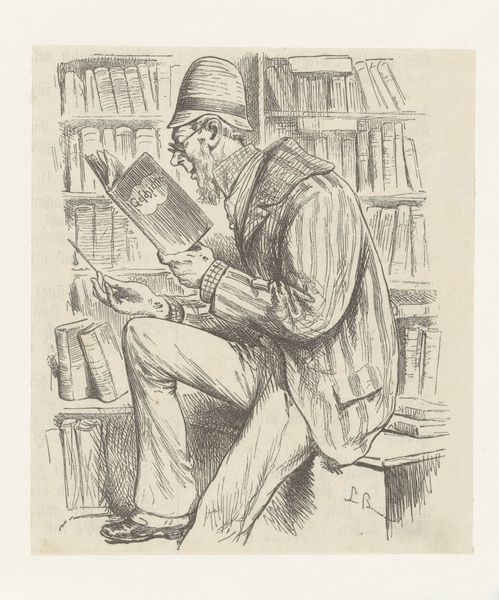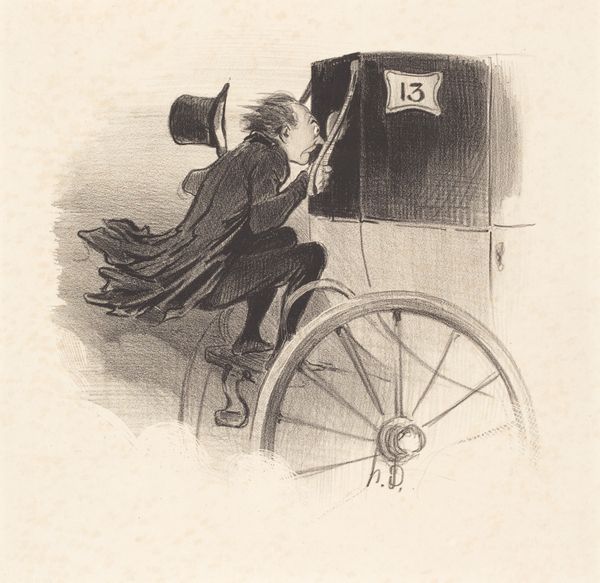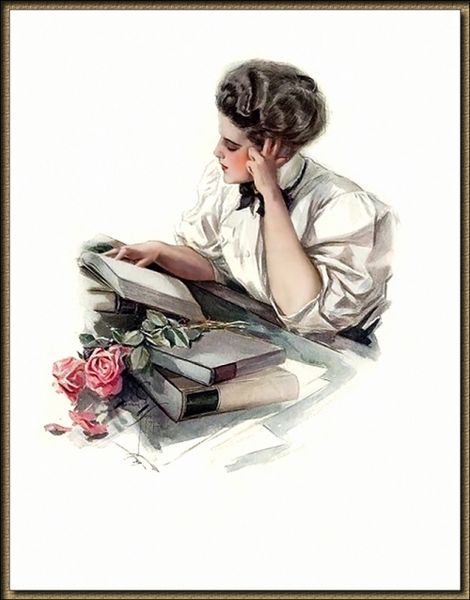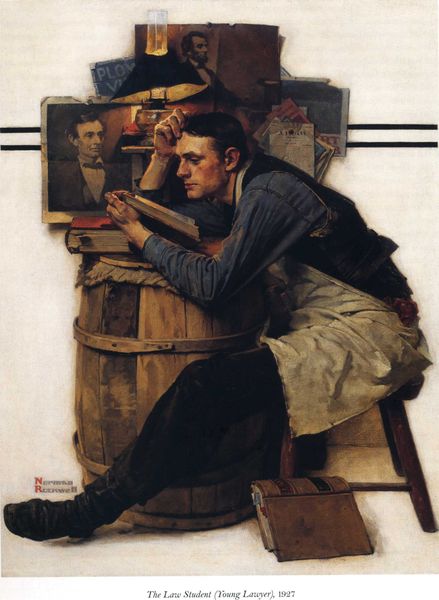
painting
#
portrait
#
painting
#
ashcan-school
#
nostalgic styling
#
genre-painting
#
academic-art
#
watercolor
#
realism
Copyright: Modern Artists: Artvee
Curator: Norman Rockwell painted "The Bookworm" in 1926, showcasing his remarkable skill in capturing everyday moments. What's your first impression of this piece? Editor: Intriguing. The palette is quite subdued—almost monochromatic with grays and browns—save for the cover of the book he’s so engrossed in. That creates an immediate visual hierarchy, focusing the eye. Curator: Precisely. The man's posture—hunched over a stack of books—evokes a feeling of intense absorption. The book in his hands is practically a sacred object, isn’t it? The sign behind him says “SOLD OLD BOOKS CHEAP." So we’re clearly getting cultural signals about the importance of education and the transmission of knowledge. Editor: From a formal standpoint, observe how the textures differ: the coarse weave of the umbrella juxtaposed with the smoothness of the book's cover, the rustic surface of the book stand itself. Rockwell masterfully varies the painting's surface using diverse, subtly shifting brushstrokes to avoid monotony and accentuate form. Curator: And isn’t that "Don't forget the cheese" note in the basket wonderfully mundane juxtaposed with the intellectual aura? Rockwell loved placing these symbols of ordinary existence within grander themes, reflecting the values of everyday people and linking the pursuit of knowledge to ordinary existence. It also speaks to an enduring image of “bookishness,” implying its slightly distracted and perhaps clumsy nature. Editor: The diagonal lines of the umbrella shaft create a strong directional pull downwards, grounding the figure within the frame. Without it, the verticality might be too stark, too stiff, perhaps failing to suggest this world of distraction we have come to appreciate. I must admit I usually dislike works like these. They lean toward what one could call a ‘narrative fallacy’ and sacrifice form for function. However, there is a charm here I cannot deny. Curator: Yes, I agree. In a way, "The Bookworm" presents us with the notion of stories and texts acting as both a comforting escape and a tool for the advancement and accumulation of selfhood. The work asks if perhaps they’re just… books, however sacred. What have we truly acquired from all our bookish wanderings? Editor: A potent reminder that visual art isn’t just what we see; it's how we see. An important work, perhaps, to reflect on what matters most in the ongoing deluge of representational forms, styles, movements, etc. Curator: An important note to take away as we step further into art historical discussion. Thanks for illuminating the significance and complexity found within.
Comments
No comments
Be the first to comment and join the conversation on the ultimate creative platform.
